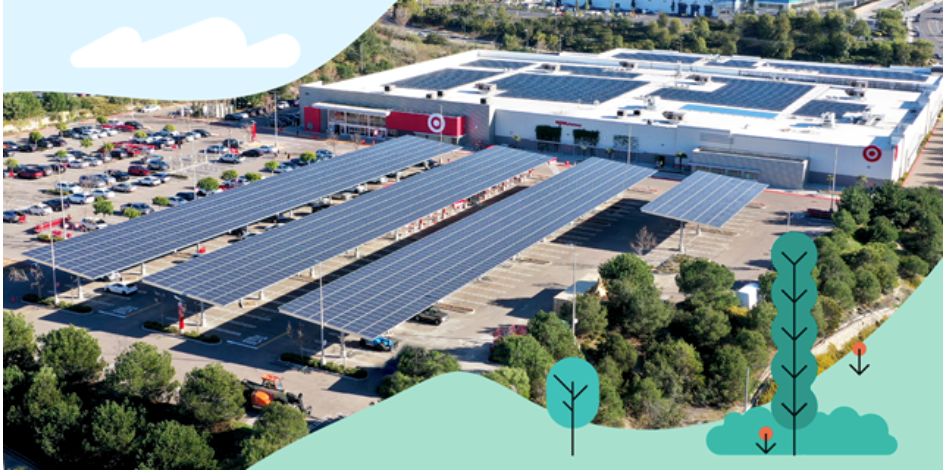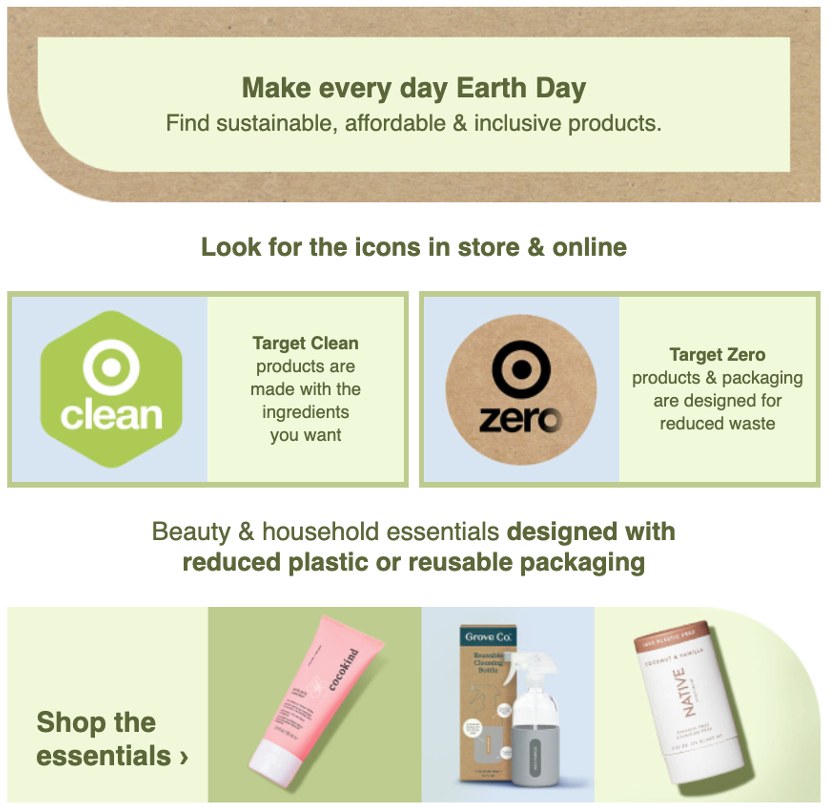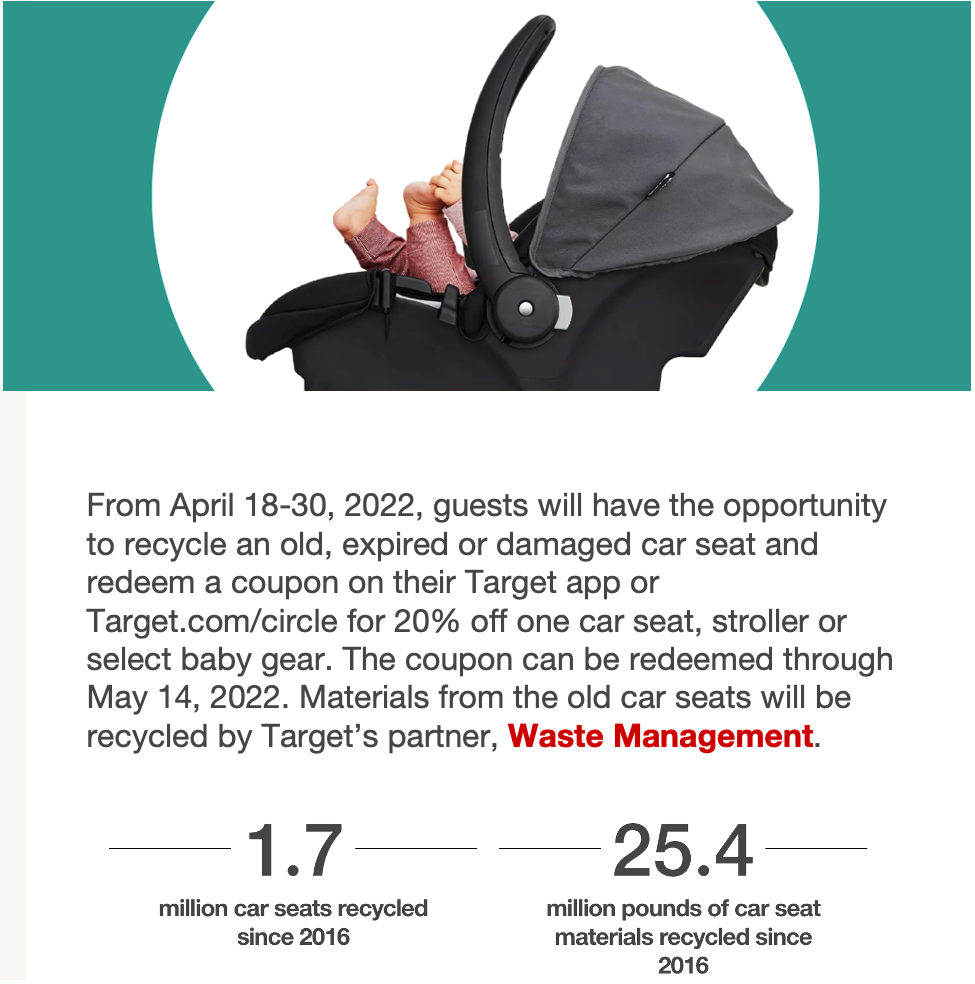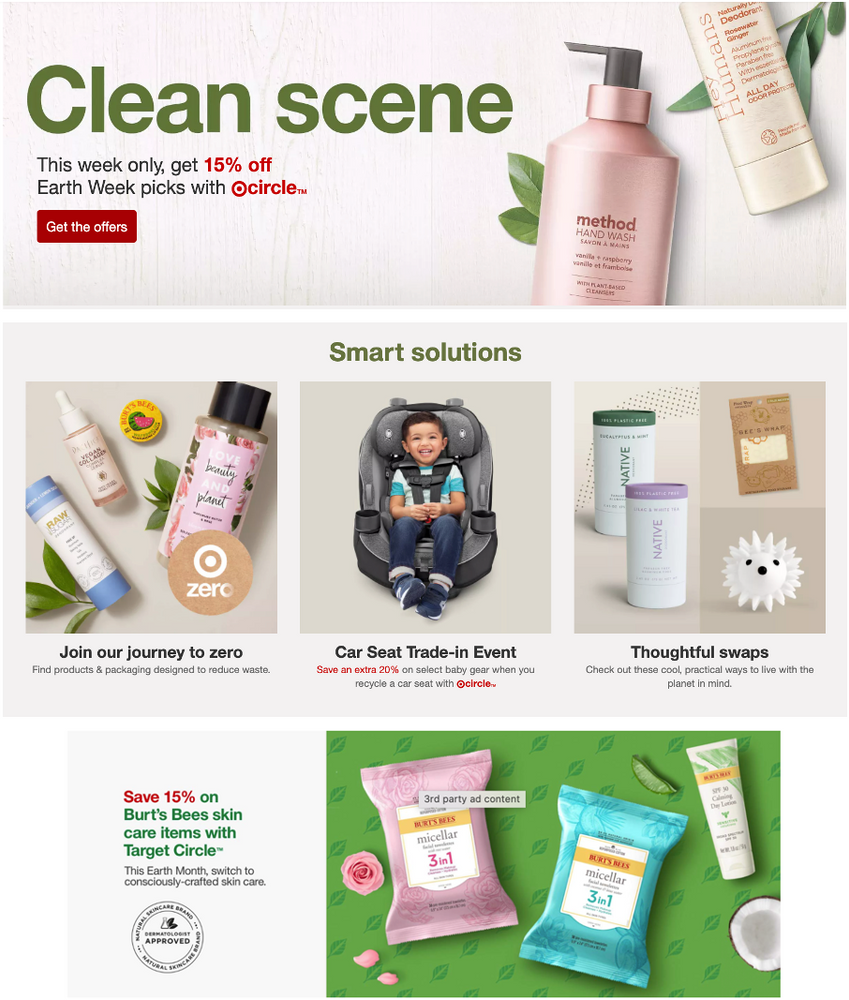The retailer’s aggressive sustainability goals are evident not only the aisles, but across every aspect of the enterprise.
The following analysis is the second in a series of reports from The Mars Agency’s Target Customer Development team that will examine the role consumer brands can play in helping the retailer’s mission critical ‘Target Forward’ initiative. This report looks at corporate-level Sustainability efforts.

Target has made a bold promise to co-create an equitable future by partnering with vendors, guests and their communities to make a positive impact on both people and the planet. The retailer’s sustainability efforts encompass an interconnected system of initiatives designed to make Target a caring, conscientious corporate citizen.

These initiatives range from planning inclusive and sustainable product assortments to increasing the renewable energy footprint of store operations and fulfillment. Target has put business and operational milestones in place to ensure these goals are achieved. To reach their goal of transitioning to renewable energy by the year 2030, they aim to source 100% of their electricity from renewable resources for all operations.
In March, Target opened a new store in Vista, California — their first net-zero energy location. Enhancements range from solar-paneled carports, to electric HVAC and carbon dioxide refrigeration (a natural refrigerant option), to 1,300 LED lights illuminating the aisles. (See image, at top.) The store’s design work took 2-plus years to complete and now will be the prototype for future stores and remodels for the company.

For the goal of becoming zero waste in U.S. operations by 2030, Target must partner with their suppliers to improve their own operational waste and reduce packaging to offset their carbon footprint.
Teams are working together to improve packaging designs, minimize the volume of trash produced, and reuse, donate and recycle more materials.
Guests are invited to do their part as well by using the in-store bins set-up to collect plastic bags, used cell phones, recyclable materials — even used car seats in the retailer’s bi-annual trade-in drive.
Target is finding ways other ways to inspire guests to pitch in, encouraging them to make even small changes that can have a big impact on the environment. In one example in late 2021, the retailer transformed the experiential Target Open House space in San Francisco into an “Adding Up to Zero” concept designed to give guests inspiration and ideas toward a more sustainable daily life: learning how to cook with less waste and energy in the kitchen, substituting household goods with refillable options, and finding new uses for old materials by mixing them to create gardening items or kid-friendly toys.

To recognize April as Earth Month, the retailer is offering Target Circle rewards program members 15% off select brands and products that were chosen based on their affinity and promise to a better future. The effort goes beyond Target’s lengthy owned brand portfolio to include brands like Grove Collaborative, a DTC brand before Target brought it to stores in 2021, and Matter, a new brand featuring compostable tableware and food storage solutions.
Target is also using Circle to get the word out about a partnership with the Arbor Day Foundation that allows guests to give back by voting through the Circle app to have Target donate a portion of profits directly to the nonprofit organization.
The retailer continues to find ways to bring joy and innovation to the sustainability space. They have made it a priority to curate every aisle, continuously evaluating and broadening guest offerings to ensure the assortment will help achieve sustainability goals while still remaining premium, delivering value and ensuring that the shopping experience exceeds expectations.
What Can National Brands Do?
As brands who work with Target. how can you increase your own sustainability footprint to support the goals within Target Forward?
- Share the Target Forward strategies with key stakeholders inside your organization to find the people who can help you find the creative solutions needed to bring ideas to life.
- Consider the materials used within the finished goods and packaging you supply to Target. How are they sourced? Manufactured? How can a Target guest reuse or recycle each piece?
“More than at any other retailer, Target’s guests are looking for products and companies that create sustainable goods and stand for social responsibility,” says Jinna Bank-Ivers, Target Sales Director for the Henkel Corp. “Target is simply expecting this from their partners and vendors. It’s more than improvements to packaging and product formulations. The consumer expects that we are continuously improving and keeping sustainability top of mind.”
Target’s promise goes beyond their retail and fulfillment facilities. They’re also looking to vendors, new and old, to co-create and prioritize affordable and accessible offerings that make an impact — better for you, better for the environment, and better for the future.
In the next article, we will dig deeper into sustainable innovation and new initiatives at the product level.
____________
At The Mars Agency, we are committed to being leaders in innovation. To help our clients stay ahead of the competition in a fast-paced and constantly evolving marketplace, we closely monitor any and all news across the Target ecosystem so clients stay “in-the-know” about this key customer. Meghan Heltne, SVP-Client Leadership, heads up our Target team in Minneapolis. Contact her: [email protected]